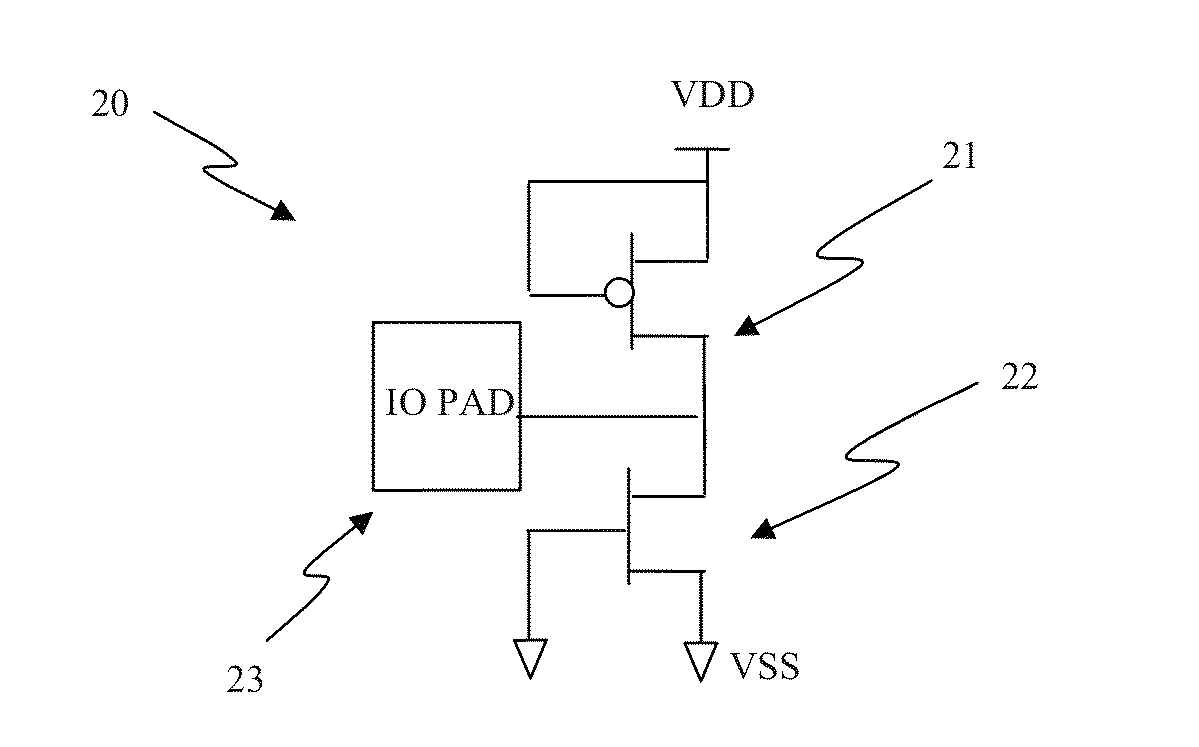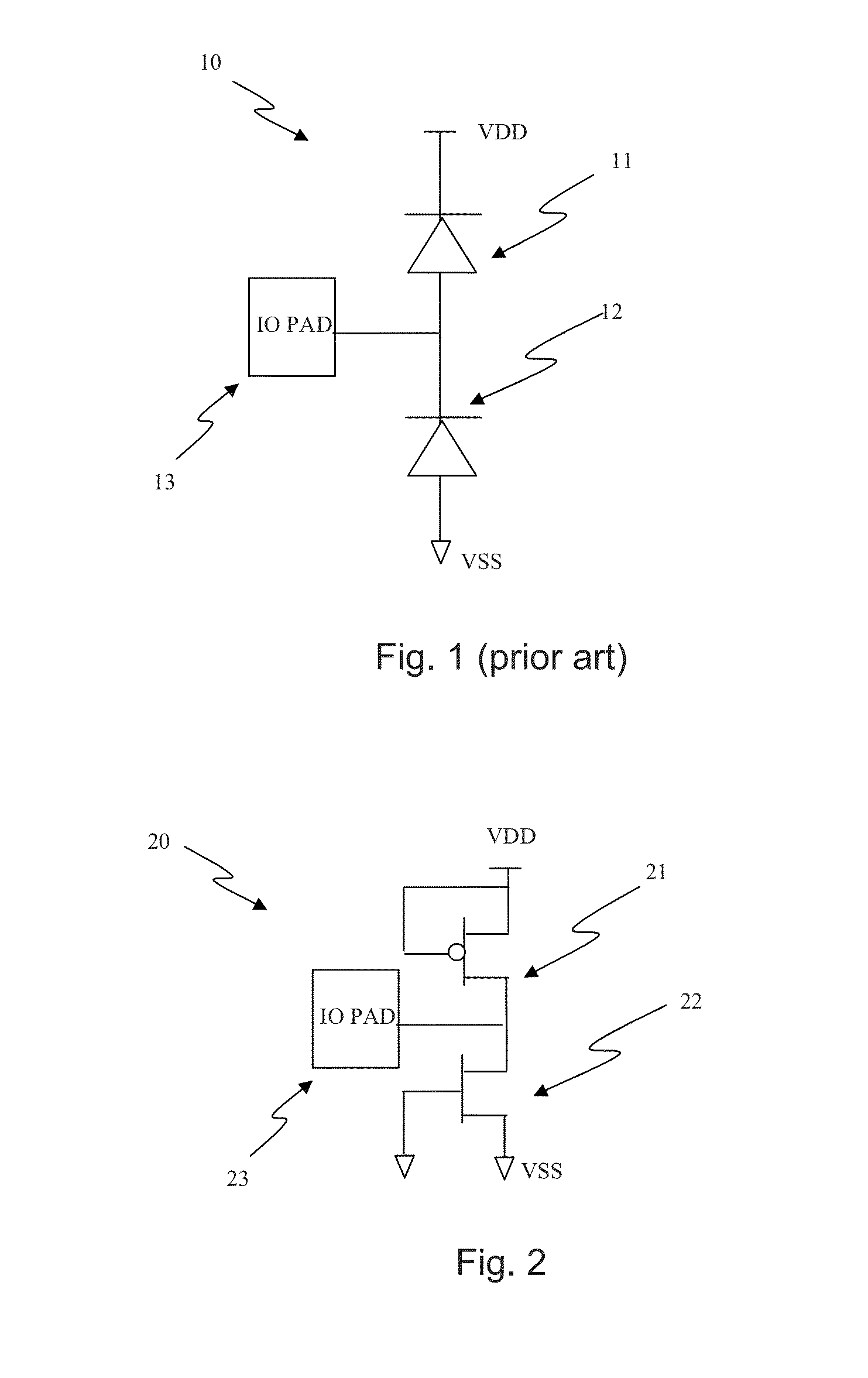Structures and techniques for using mesh-structure diodes for electro-static discharge (ESD) protection
a technology of electro-static discharge and diodes, applied in the direction of emergency protective circuit arrangements, basic electric elements, etc., can solve the problems of destroying mos gate oxides, damaging metallurgical junctions, and damaging delicate integrated circuits, etc., to achieve low input capacitance, high esd immunity, and small i/o size
- Summary
- Abstract
- Description
- Claims
- Application Information
AI Technical Summary
Benefits of technology
Problems solved by technology
Method used
Image
Examples
Embodiment Construction
[0045]Embodiments disclosed herein use an ESD structure having a mesh structure of cells with at least one diode on at least one side of at least one cell. The contours of the cells in the mesh can be circle, rectangle, square, triangle, hexagon, or other shapes with polysilicon, active-region, or junction diodes built on at least one side. The diodes can comprise P+ and N+ implants on a polysilicon, active region on an insulated substrate or junction diodes on a silicon substrate. The P+ and N+ implants regions can be separated by a gap (or isolation), such as LOCOS (LOCall Oxidation), STI (Shallow Trench Isolation), dummy gate, or silicide block layer (SBL). The gap can be covered by a silicide block layer (SBL) and overlapping into at least a portion of both P+ and N+ implant areas to form P / N junctions on the insulated or silicon substrate. The diodes can also be constructed from junction diodes with at least one N+ active region on a P substrate or at least one P+ active region...
PUM
 Login to View More
Login to View More Abstract
Description
Claims
Application Information
 Login to View More
Login to View More - R&D
- Intellectual Property
- Life Sciences
- Materials
- Tech Scout
- Unparalleled Data Quality
- Higher Quality Content
- 60% Fewer Hallucinations
Browse by: Latest US Patents, China's latest patents, Technical Efficacy Thesaurus, Application Domain, Technology Topic, Popular Technical Reports.
© 2025 PatSnap. All rights reserved.Legal|Privacy policy|Modern Slavery Act Transparency Statement|Sitemap|About US| Contact US: help@patsnap.com



